Cold Weather Paintball Tips!
Posted by Josh Silverman on 13th Nov 2020
Cold Weather Paintball Tips!
How to Play Well, Keep Gear Working & Have Fun In Cold Weather!
Playing paintball in the cold comes with its own set of unique challenges. Cold weather paintball tests paintballs, paintball equipment and paintball players in ways playing paintball in other weather conditions do not. Using the right paintball gear for cold weather paintball and preparing for cold weather paintball games in the right way makes all the difference between a fun day of shooting opponents and hanging flags, and a frustrating day of numb toes and fingertips and malfunctioning equipment.
Paintballs and the Cold
Paintball in cold weather challenges the most important thing a player needs to have a great time playing the game – paintballs – more than almost any other weather or climactic condition. As paintballs are biodegradable, water-soluble and designed to be environmentally friendly, they are susceptible to becoming extremely brittle if they’re allowed to become exposed to cold, or even chilly, temperatures for more than a few minutes. This can quickly lead to paintballs that shatter when dropped and fly apart the moment a player tries to shoot them through a paintball gun, leading to nasty, paint-filled guns, loaders and gear that can absolutely ruin a game, or a day of paintball. That doesn’t mean, however, that paintball can’t be played in the cold!
The easiest way to ensure paintballs perform well in cold weather conditions is to simply switch paintballs! Rather than the usual paintballs that work just fine for a player in normal weather, paintball manufacturers like Valken produce cold-weather paintballs like the new Valken Chill, that is specially formulated to resist cold weather and maintain solid performance as the temperatures drop. Not only will cold weather paintballs like Valken Chill perform better in a player’s paintball gun and hopper, and shoot straighter and more consistently in cold weather than non-cold-weather paintballs, but they will provide a player using them with a distinct advantage over opponents not using a cold-weather formulated paintballs.
Players unable to choose cold weather or Winter paintballs like Valken Chill to shoot need not worry, all is not lost. A few simple steps can be taken by a serious paintball player to ensure paintballs will perform well in colder temperatures. Some paintball fields or paintball events like scenario games offer various brands, or levels of paintballs a player can choose from to play and in colder weather, the higher end paintballs that are designed to be extremely brittle aren’t the best choice – cold weather, we’ve determined, makes paintballs brittle, so paintballs that are already brittle aren’t going to work great in the cold. Rather, a mid-level or entry-level paintball designed to work in higher-pressure paintball guns that aren’t as gentle on paintballs without flying apart are a great choice. Valken Graffiti, Valken Infinity, Valken New World and Valken Tango are all better choices for cooler weather than higher-end paintballs when temperatures drop.
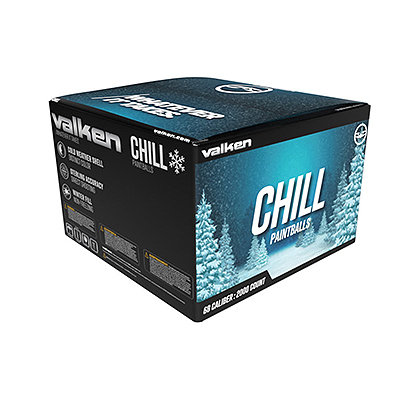
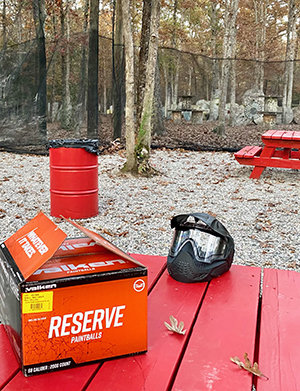
Once a paintball player has selected their paintballs for cold weather play, simply taking the case and leaving it on a picnic table isn’t a great idea, because that’s where the cold weather is – outside. A player in cold weather should protect their paintballs from that cold weather by keeping them as warm as possible until it’s time to load them up and use them – many players do this by keeping their paintballs in a running car or truck with the heat on to keep their paintballs closer to room temperature until loading them into a hopper and pods. Again, many serious players even keep their pack and loaded pods in the car until it’s time to actually walk onto the field for a game, as this keeps the podded and loaded paintballs warmer longer.
A final piece of advice when it comes to paintballs and cold weather is for players at major scenario or big game events, or even the local field – paintballs are generally stored by paintball businesses in climate-controlled facilities from buildings to refrigerated trucks. Many players show up at a field or a game, grab a case or more of paintballs and then camp with them in the cold, or leave them in a cold tent or on a picnic table where they get cold and perform poorly, then blame the paintballs. It isn’t the paintballs. When grabbing paintballs from the field or the paint truck at a major event, don’t take more than you can carry and shoot! This will keep the rest of your paintballs where they belong – in climate- controlled comfort, until it’s time to grab them, pod them and go play! They’ll feed better, they’ll shoot better and you’ll have a better day of paintball.
Paintball Guns and the Cold
Paintball guns are designed to do pretty remarkable things when you stop and think about it. They’re designed to use mechanical energy and air power, and sometimes electronic power too, to launch a paintball designed to break when it hits something, at around 300 feet per second without smashing it, shoot it as straight as possible, often ten or more times per second, without breaking in all kinds of weather and climactic conditions with generally little maintenance. That’s asking a lot all by itself, but drop the temperature twenty or thirty degrees or more, and it’s asking that much more.
Propellants like CO2 don’t like the cold – pressure in paintball CO2 tanks drops and tanks can even freeze in the cold. In the cold, compressed air is a much better choice for a paintball air source no matter what kind of paintball gun might be in someone’s hands. Some paintball guns require oil for lubrication and others require grease – a clean, well lubricated paintball gun will work better in the cold than a dirty one, and a paintball gun slathered with grease likely won’t cycle well in the cold either. Just enough grease on the o-rings and moving parts to do the job is all that’s necessary, especially in the cold weather when thickening grease may lead to drag.
Electronic paintball guns, with their AA or 9volt battery power sources, grease lubrication, solenoids and anti-chop eyes and electronic boards, are challenged in the cold more than most. It’s a good idea, before a day of play in the cold weather, to clean and carefully lubricate electronic tournament paintball guns, and ensure that a fresh, high-quality battery is used for power. A fresh set of high-quality batteries for that paintball loader that feeds a tournament paintball gun are a great idea on a cold day as well, and some players may even want to consider turning their rate of fire down to ensure a consistent feed of paintballs makes it into the paintball gun and down the barrel without breaking when temperatures get chilly.
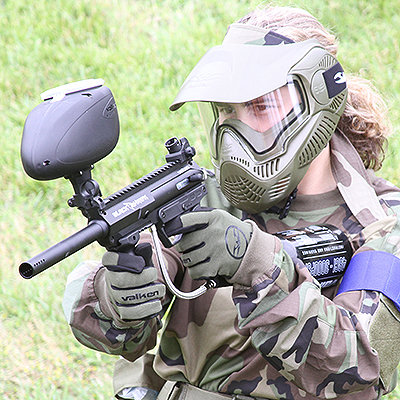
Paintball Barrels and the Cold
Some paintball players have a single paintball barrel and that’s what they shoot their paintballs downrange with. However, many players own a paintball barrel kit to properly size their paintball barrel to the paintballs they’re using, improving accuracy, consistency and overall performance. In the cold a paintball barrel kit can be extremely helpful to ensure fewer paintballs break in the barrel, as players can choose to slightly increase the bore size used to shoot specific paintballs, a process called “over boring,” that will put less stress on each paintball as it moves down the barrel. This will reduce drag that each paintball experiences as it is fired and slung down the barrel – in the cold excess drag can cause brittle paintballs to fly apart before they can exit the barrel and over-boring helps with this process. If a specific paintball is a .687 bore size, for example, a player would simply use a .689 bore size, allowing similar accuracy and consistency, but with fewer ball breaks in the barrel on a cold day.
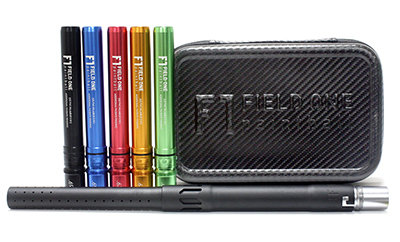
Paintball Players and the Cold
Then there’s the player. Cold weather can numb the fingertips and toes, especially when the temperature drops into the thirties and lower. Paintball players can take plenty of precautions to stay warm on the paintball field. A player gearing up to play paintball in the cold should grab a pair of gloves – at least a pair of paintball gloves – to help keep the hands and fingers warm and to take the sting out of incoming paintballs should they catch a knuckle or back of the hand. Players should layer up in the cold weather, adding thermal clothing if possible or at least a hooded sweatshirt under a jersey to help keep warm air in and cold out there where it belongs. Should a player’s paintball pants be baggy enough, long underwear under the paintball pants can help in the cold as well, especially if a player’s chosen pair of paintball pants are extensively ventilated for play in warmer weather. If they don’t already, a player should consider a nice thick, warm wool beanie to help hold the heat in where it leaves the body most, through the head, and soften the blow should a paintball find the top of a player’s head or forehead during cold weather play. Finally, the usual cleats or sneakers may not work for cold weather paintball, and a player might want to consider a hiking boot, or tactical boot with a thicker pair of socks or two, to keep the feet and toes warm during play.
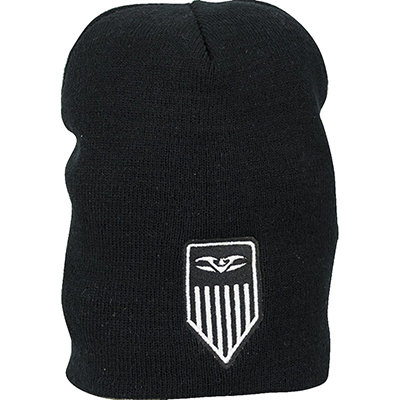
Paintball in cold weather, with the associated snow, leaves on the ground and different lines of sight in the woods as compared to warmer weather, can be intense and a great deal of fun if the gear and the player prepare for it properly! Use and take care of the right paintballs, adjust gear accordingly, dress for the cold weather and have a great, and safe, time!
